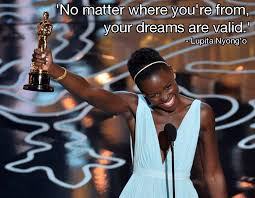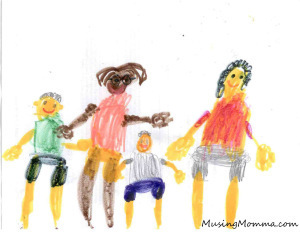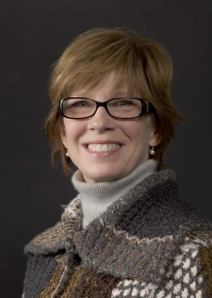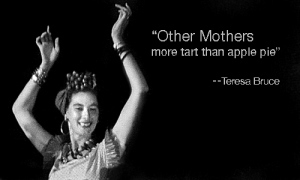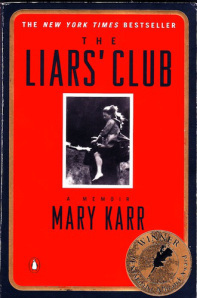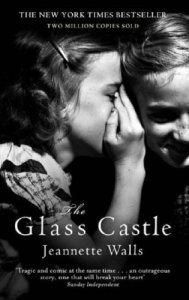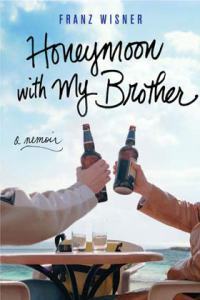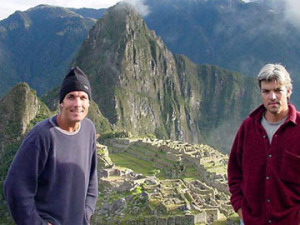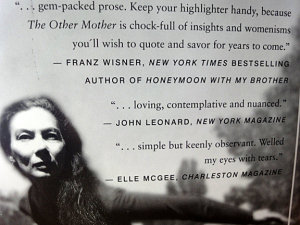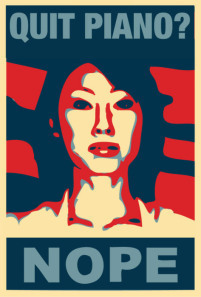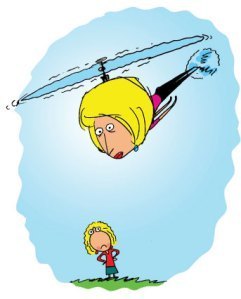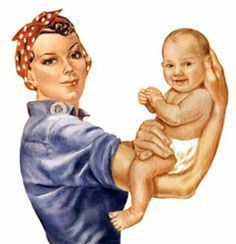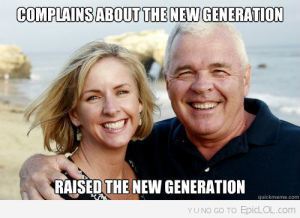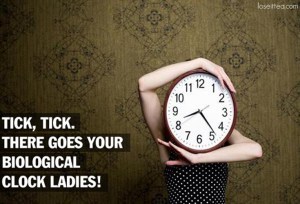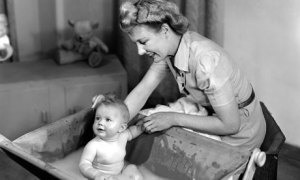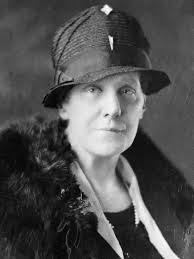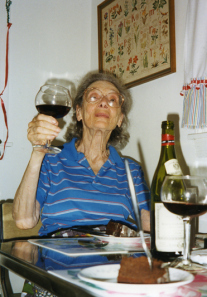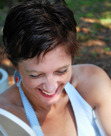Teresa Bruce's Blog, page 34
May 6, 2014
Other Mother Landmines
With Mother’s Day approaching, I’m keenly aware of all the ways my sister devotes herself to her children. I’ll pester my niece and nephews all month to make sure they don’t forget to make her cards and breakfast in bed. My sister dotes on them, sometimes so much so that they take her for granted.
I’d probably be a much meaner mom – Type A personality that I am. There’d be a lot more rules and responsibilities. But it’s a tricky topic to bring up. It’s what I call that awkward part of othermothering. Even though my sister considers me “other mother” to her three kids – there’s no getting around the fact that I don’t have kids of my own. So is my advice worth anything?
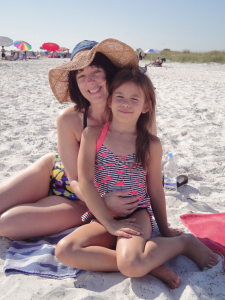
So what do I know about raising kids? Not a lot
I’m not looking for affirmations here. I’m genuinely skeptical. Byrne Miller, my other mother, had raised two girls of her own long before I came along. She could expand my horizons without worrying that her advice was untested.
It can seem like a big risk, offering yourself up as an “Other Mother.” Especially if, like me, you don’t have any first-hand experience. That’s where my sister, the full-time mother of three, bursts into a belly laugh.
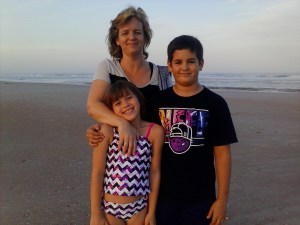
My wonderful sister Jenny, with Marina and Raiden
“And you think anyone knows what they’re getting into when they become a mom? Don’t wait until you’re a perfect role model. Just jump in and be there.”
Her youngest child Marina is such a sweetheart she attracts other mothers like a magnet. Instead of worrying whether these other mothers have parenting bonafides, Jenny’s biggest fear is that they’ll swoop in and form a bond and then get a new boyfriend or a new job or have a baby of their own and leave Marina devastated.
“An adult understands that you can’t always keep promises. Kids don’t,” she says.
It turns out there’s a much more important measure of othermothering value that has nothing to do with having kids of my own.
“You want to know what makes you a real other mother?” Jenny asks. “When you offer to do the gymnastics car pool.”


May 4, 2014
A Village of Other Mothers
If Byrne had been a psychotherapist in the 1980s she might have been accused of re-parenting me. If I’d met her when I was still competing she’d have been called some sort of life coach. If she had been a journalist or writer she might have been labeled a mentor. But none of these definitions describe the role she played in my life, or the role I believe many “Other Mothers” play in the emotional development of women.
I do not claim first dibs on the term othermothering. In the state where I now live it goes back to when slave mothers were sold off the plantation and other women took over the caregiving of the babies forced to stay behind. Anthropologists call these substitute mothers “Fictive Kin” and in her book “Black Women and Motherhood,” University of Maryland professor Patricia Hill Collins says “the tradition of othermothering constitutes a challenge to the notion that children are the private property of parents.”
It’s no coincidence that the pop-culture expression “it takes a village to raise a child” stems from African parenting traditions, according to philosophy professor emeritus from the University of Wisconsin Milwaukee, Dr. Carl Hedman. “We only hear about the negative stereotypes in the black family but in this sense they’re way out ahead.”
He should know. While his wife was getting her master’s in nursing in the 70s, their family lived in a multi-racial commune. “ I don’t know why society is so locked into private attempts to be happy,” Hedman says. “Having other mothers to help raise our two sons was good for our marriage.”
Even the way he pronounces commune, more like the what-you-do-with-Mother-Nature verb than the wacko-hippy connotation, confirms what he sees as the benefit of othermothering. The Hedmans stuck with group housing even after their own boys were grown. “It eased the empty nest syndrome. I could still be a father figure in everything from teaching little boys to ride bikes to helping one of them cope with the stress of getting through Yale.”
Perhaps the same forces were at work when Byrne Miller added me to her collection of daughters.
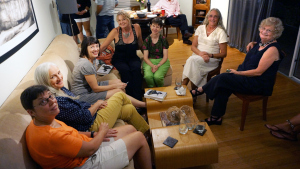
Me with several of my “sisters by Byrne”


May 1, 2014
More is better, with other mothers

Byrne in St. Thomas
By now you’ve read all about the woman I call my other mother. Byrne Miller was the other mother of my book’s title. But just as there is no one, single definition of other mothers, there’s no law that says you can’t have more than one.
In and of itself, that’s one major difference between other mothers and the kind we’re born with. The very fact that we choose them, or they choose us, makes the bond something most of us don’t have with the mothers who raised us. Not that we’d trade our mothers in – other mothers are never replacements, just lucky additions to a treasured life.
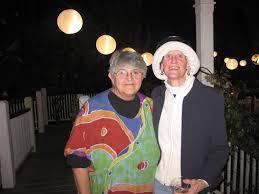
Georgia Phillips on the left, with artist Rebecca Davenport
I’ve been lucky enough to have more than one. I share an other mother right now, with dozens of other people who came to Beaufort, South Carolina from other places. Her name is Georgia Phillips and she runs the gallery where Gary’s work was first exhibited. I mention that because it’s the way she othermothers – she spots people with talent, makes sure others come to share her opinion and then if they’re really lucky, invites them into her coveted circle of dinner guests. Which isn’t to say she’s a new-age, everything-you-do-is-wonderful kind of other mother. She never lets me forget how bad of a cook I was when she first took me under her wing. I’ve never lived down the over-salted bean soup I attempted to serve her in the 90s, and to this day she’ll only come for dinner if I tell her Gary’s doing the cooking. She’s the kind of other mother who keeps you grounded. And five pounds heavier than you should be. And when I’ve been away from Beaufort on shoots for too long, she’s the one I’m homesick for. I’ve even called her from the road, just to hear her voice and know that she’ll still make fun of me and feed me when I return.
I’d have to say that Patricia Brewer-Jones, the ballet teacher you meet in Chapter One of “The Other Mother” was the first other mother I can remember. She never even knew how much she broadened my horizons, or how often she came up in conversations around our living room. I talked of her so incessantly that my father nicknamed her “Patti Who?”
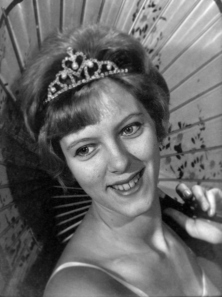
My mother, Beverly, in a high school production of “My Fair Lady”
I’m often asked if my mother was ever jealous of Byrne. By the time I met Byrne I was 22 and so far removed from the circle of my mother’s influence that she was relieved, if anything. Not so when I was 12 and dreaming to become a ballet dancer. But still, I don’t think she was jealous of Patti. If anything she was envious that in her I had found a champion, someone who believed in my talent more than anyone had ever believed in my mother’s. (insert photo)
That’s why other mothers are so important. I wish my own mother had had a Patti, Georgia or Byrne. So as Mother’s Day approaches carve aside a little space to think of your other mothers too.


April 29, 2014
Secrets you can’t tell mom
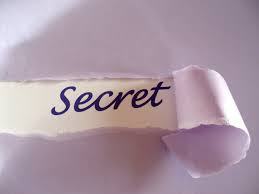 I still remember the first time I confided in my mother about sex. I was nine years old, living in South Africa, and had a secret that seemed so terrible I thought everyone could tell what I’d done just by looking at me. I had played spin the bottle with Simon from up the street. He spun. It pointed at me. I let him see my underpants.
I still remember the first time I confided in my mother about sex. I was nine years old, living in South Africa, and had a secret that seemed so terrible I thought everyone could tell what I’d done just by looking at me. I had played spin the bottle with Simon from up the street. He spun. It pointed at me. I let him see my underpants.
My mother immediately went to my father with it and I never told her another embarrassing secret. Even when I really could have used her advice.
Fast forward thirteen years to Beaufort, SC when I began to realize that Byrne Miller was my other mother. She was 82 and I was 22 – so the age gap alone made it somehow easier to talk to her. But it was more than that. I could share secrets with her because we had chosen each other, we shared no genetic ties. She didn’t know about Simon or spin the bottle and she wouldn’t have cared. This former burlesque dancer had seen and done things that would shock Miley Cyrus today.
Over the course of ten years, I was able to tell Byrne things that would have upset my mother more than she could bear. If I had told mom about the man who stole my dog, broke my hand and tried to crash a plane with me in it – she would have been reminded of too many parallels in her own marriage.
But Byrne and I had no shared history. Our relationship was fresh and self-determined. I learned to trust that she would never judge my decisions or critique my opinions. She didn’t have to. She wasn’t responsible for me. She just told stories of choices she made in her life, colorful anecdotes and analogies I call womenisms in the book.
“Every woman should have at least one affair. It builds confidence,” my other mother used to tell her collected daughters. “Monogamy is overrated. Honesty is imperative.”
I could never even discuss spin the bottle with my mother, let alone infidelity and forgiveness. There are some things only meant for an other mother’s ears. And Mother’s Day is the perfect time to make sure she knows how much you appreciate zipped lips.


April 24, 2014
Mothers in Memoir, still Mommy Dearest?
When I started writing the memoir of my relationship with Byrne Miller – “The Other Mother: a rememoir” – I collected recommendations. I devoured any memoir recommended by a trusted friend, even some from dubious readers. My goal was to be different from all of those memoirs, while at the same time learning all I could about the genre.
What struck me was the fate of mothers in those memoirs. I wasn’t a fan of the genre and expected to be inundated with Mommy Dearest airing of dirty laundry. I was curious about mothers in memoir mostly because I was trying to decide how much of my mother’s story to include in my other mothers’.
One of my favorite research reads was Mary Karr’s “The Liar’s Club.” The title actually refers to her father – the champion liar. “His stories got told and retold before an audience of drinking men he played dominoes with on days off… Certainly not much of the truth in any technical sense got told there,” she writes.
But it was her mother’s story that stuck with me. “All Mother’s marriages, once I uncovered them in my twenties, got presented to me as accidents.” She was a flawed but fascinating character and I moved on to another memoir searching for mothers.
In Alexandra Fuller’s memoir of a white African childhood, “Don’t Lets Go to the Dogs Tonight,” I met a mother I recognized. One who loses not just one child, like my own mother did, but two. A mother who can’t fight the grief head on and a daughter who found a way to write about it. “I watch Mum carefully. She hardly bothers to blink. It’s as if she’s a fish in the dry season, in the dried-up bottom of a cracking riverbed, waiting for rain to come and bring her to life.”
In Jeannette Walls’ “The Glass Castle” I found a mother whose crazy had crossed over into her daughter’s seemingly perfect life. The first line crystallizes a feeling that every embarrassed daughter will recognize– but a hundred times worse. “I was sitting in a taxi, wondering if I had overdressed for the evening, when I looked out the window and saw Mom rooting through a Dumpster.”
So far my search for the best way to write about mothers wasn’t comforting. It seemed like only the most egregious, unforgiveable mothering behavior made it into memoir. And then I found an Other Mother.
She came in the form of LaRue, the ninety-nine-year-old step grandmother in Franz Wisner’s “Honeymoon with My Brother.” Even though this memoir starts with a jilted groom story, it ends up being a travelogue of the heart. What grounds Franz is his relationship with LaRue. This is how he tells her of the honeymoon with his brother:
“We’re going to quit our jobs, sell our houses, and travel around the world for a year.”
“Wonderful!” she said without pause.
“You know, you’re more than welcome to join us for a stop of two,” I said.
“Well I just might,” she said. “I love travel. It’s one of the few things in life you never regret.”
He writes to her along the way.
“Dear LaRue – I won’t tell you much about our accomodations (felt more like a Ralph Lauren showroom than a middle-of-nowhere safari) because I want you to be under the impression that we roughted it. Don’t want to completely ruin our backpacker image. Love, Franz.”
I knew had finally read the memoir I was looking for. When I asked Franz Wisner for a blurb for “The Other Mother,” he cheerfully wrote back from travels in Spain.
“Of course,” he said. “I love the book. Byrne brings back a little of LaRue for me.”


April 22, 2014
The Case for Crowdsourcing Motherhood
The benefits of othermothering aren’t limited to older women like Byrne Miller, or to women whose children are all grown. I believe it can be a release valve for women without children too – call it my case for crowdsourcing motherhood.
Here’s how I got to this idea: I’m astonished by the social media frenzy around women freezing their eggs to give Mr. Right more time to show up, or those who choose single motherhood over co-parenting – not because I’m some Betty Crocker throwback but because I’m awed by the guts it takes to be a mother of any stripe these days. Let me “out” myself – I’m a happily married writer and filmmaker without children. Can you blame me? Just think about the range of the modern stereotypes pre-judging almost every style of mothering.
If you’re an ambitious “Tiger Mom,” then you might as well wear a scarlet letter “A” for child abuser. If you’re a hippy BFF mom then clearly you’re too needy to form adult friendships.
If you’re a helicoptering, Baby Boomer mom then everyone knows your kids will fail to launch and will eat up your data plan photographing themselves instead of getting jobs. And speaking of jobs, let’s not forget you working moms – from “Lean In” corporate climbers to single moms for whom “stay at home” means sick days without pay. According to recent studies at least 50% of your neighbors think your kids are “disadvantaged” thanks to your non-traditional tendencies.
Other mothers are held to a much more humane standard. We get no flack about our age or biological clock. Nobody expects us to consider it a full-time job. We don’t pay college tuition. And we are privy to secrets no-one would dream of telling their mom.
I’m sure that some people will interpret my decision to opt-out of full-time motherhood as selfish at best, or at worst question whether I’m really a woman. But my experience on the receiving end of othermothering gives me confidence that I have a way to pay it forward. More than just coveting my role as best-aunt-in-the-universe, I love that my younger sister relies on me to be an “Other Mother” to her three children and that one of my best friends welcomes my commitment to her non-verbal daughter. I am fine-tuning my emotional radar to young women I sense need impartial support and nurturing. Someday I will be a Byrne for one of them.


April 17, 2014
Why “rememoir,” not just memoir?
One day I hope you’ll look up “rememoir” in Wikipedia and see the word credited to me, and “The Other Mother.” Right now each time I type it, Word underlines it red as a misspelling, like a red flag of warning. Something’s different here! Pay attention!
It would have been simpler just to call “The Other Mother” a memoir. But I invented the word rememoir because it’s the truth as I remember it. I am the only one who could tell this story – it’s about a relationship that defined me. The thoughts, dialog and emotions I write about come from my own recollection, from the stories Byrne shared with me, the womenisms she told her other collected daughters, quotes she gave to reporters (including me), letters she invited me to read and events she documented in her personal journal. I sifted through these memories and arranged them in a way that represents the truth to me.
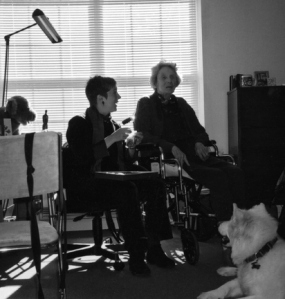
Me (and Wipeout) helping Byrne sift through her own memories — this was the visit where she met the man taking this picture, my husband Gary
There will always be a place for the pure biography. At its best, it is research elevated to an art form. But in this age of instant access to worldwide “facts,” readers want something more than readily knowable facts when they buy a book.
I’m not frightened by this, as a writer I find it freeing. Truman Capote gave us the nonfiction novel, with every cold blooded detail recorded and reconstructed by his photographic memory. Not everyone can do that. So luckily there’s a whole genre out there of creative non-fiction, and now there is novelization, the art of imagining the story and thoughts behind a person already in the public eye, like “The Girl With The Pearl Earring” but no longer an anonymous character.
Rememoir, a remembered memoir, is even more personal – it finds the story in a personal truth, told by the imperfect human being who experienced it.


April 13, 2014
The Granny Gap
Earlier this month, the Wall St. Journal had an article about baby boomers impatient to become grandparents. The irony, the article pointed out, was they themselves were the first generation to delay getting married and having kids. And now their grown children are waiting even longer – putting off motherhood until they’ve earned advanced degrees or the right work/life balance.
I call it the Granny Gap – it’s been something I’ve thought about since I started writing “The Other Mother: a rememoir”
I’m lucky enough to have a younger sister who had kids relatively young and took the heat off of me. I’m also lucky enough to have been both othermother and mothered and I contend it could be a practical solution for would-be moms and grandmothers to bide their time.
The average American woman today waits four years longer to have her first child than her own mother did. Other than celebrities and trailblazing women having their first babies when they’re 45 or older, the overall U.S. birthrate has been on a steady decline since 2007. The average age a woman in the U.K starts a family is 30. They’re so freaked out by this across the pond that a pregnancy testing company runs ads of a photo-shopped, grey-haired hag in a Demi-Moore, bare belly pose to scare women into reproducing earlier. The June 28th, 2013 edition of the Daily Mail informed readers that women with university degrees are bulging the belly curve even later by waiting until they turn 35 to make babies. The horror!
“If the phenomenon continues for another generation,” the article contends, “it means some grandparents will have to wait an extra 20 years, until the age of 70, to have their first grandchild.”
Let me clear my throat. If there is indeed an impending granny gap, othermothing is a low-tech way for women on both ends of it to meet their nurturing needs. Not to mention the chief beneficiaries of multiple mothers providing emotional support: the children both mothers and grandmothers cherish.


April 10, 2014
The Original Other Mother
This May 11th marks the 100th anniversary of Mother’s Day in the United States, a holiday responsible for $16 billion dollars worth of flowers, chocolate, spa treatments and restaurant dinners spent on moms each year by grateful children.
But the woman who started the holiday a century ago, Anna Jarvis, had no children of her own, making her what I consider the quintessential other mother.
I wrote in “The Other Mother: a rememoir” that I couldn’t have pinpointed the exact time when Byrne became my other mother any more than when I became aware of my own name. You just know what an other mother is when you’re lucky enough have one. She’s that special aunt, coach or older friend who doesn’t have any genetic ties so you can talk to her about things you’d never tell the woman who changed your diapers.
All I know for sure is that the term other-mothering dates back long my book or Anna Jarvis’ Mother’s Day campaign.
“You have to remember nuclear families are pretty new in all of human history,” says Dr. Hedman, professor emeritus of the University of Wisconsin. “We can’t be everything to everyone. Having other mothers helps relieve the tension and make parents happier.”
I think he’s onto something. I met my other mother when I was 22 and she was 82. My biological mother lived across the continent and was grateful that another wise, caring woman was there to offer me advice and love.
She’s be the first one to agree with the opening of the flap copy of my book: “Sometimes it takes a complete stranger to show us who we were meant to be.”
I remember every Mother’s Day I spent with my other mother. The florist in Beaufort, South Carolina – Bitty’s Flowers — could barely keep up with bouquets for Byrne Miller. They came from her collected children around the country: proof of how we all need and cherish the love of other mothers.


April 4, 2014
The Bee Symphony
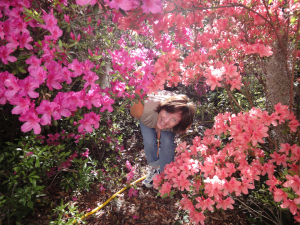
listening to the bee symphony
Thanks to Byrne Miller’s love of the indecent, ill-mannered, un-reserved, show-offy wild azalea, there is now a shrine to the little-bit-slutty bloom right next to my house. Every day I crawl into the opening of a wild, un-gardened garden just for inspiration.
Byrne’s legacy may be that she is considered the Johnny Appleseed of modern dance in the South. But she started out with dreams of becoming a concert pianist. Her parents, orthodox Jews in depression-era Manhattan, both played. She practised as religiously as a later-acknowledged agnostic could, but it didn’t happen. Still, she loved classical music for the rest of her life. One of her secret dreams was to have an entire symphony at her disposal, a private concert in a grand hall.
When I duck into the un-garden, I know why she left it to its own devices. Big bumble bees buzz from bloom to bloom, so intent on doing what they do that they literally bump into me. I close my eyes and feel Byrne all around me. It’s a bee-symphony. Commissioned by her.



